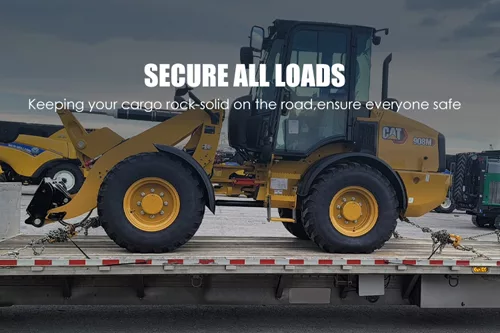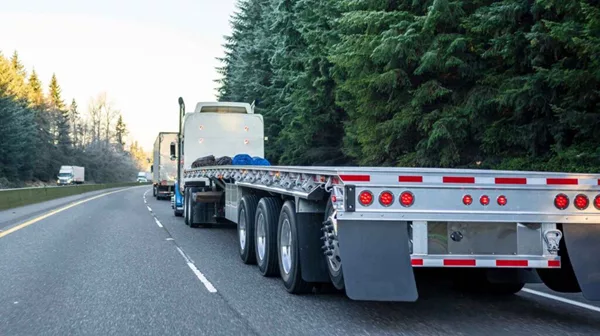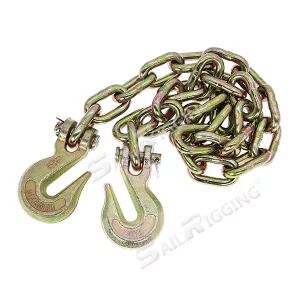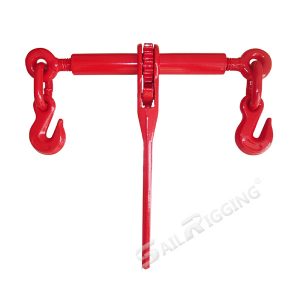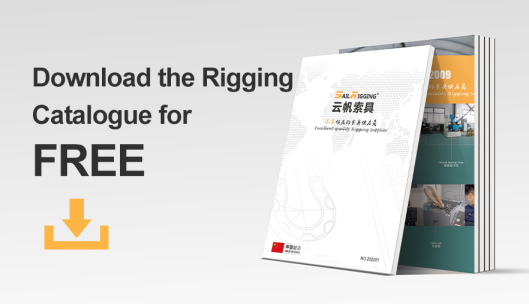Secure All Load On Flatbed Trucks
Flatbed trucks are a vital mode of transportation in the logistics industry, providing safe and efficient solutions for transporting goods exceeding standard size or weight limits, especially large, heavy, or irregularly shaped building materials, heavy machinery, and industrial equipment. They are an indispensable part of the transportation sector. However, ensuring safe cargo transport is far from easy.
Table of Contents
According to a recent study by the AAA Foundation for Traffic Safety, more than 200,000 traffic accidents involving road debris occurred on US roads between 2016 and 2021, and from 2011 to 2014, road debris caused approximately 39,000 injuries and more than 500 deaths. A portion of these road debris accidents are caused by insecurely loaded cargo, leading to items falling off the truck. Insecurely loaded cargo can shift and spill onto the road, causing traffic accidents.
Regulations Of Load Securement
The Federal Motor Transportation Safety Administration (FMCSA) has established specific guidelines for calculating the required number of securing devices. The minimum number of securing devices depends on the length, weight, and type of cargo, and the rated working load limit of all securing points must be at least 50% of the total weight of the cargo.
█ Cargo Length
1) Cargo length determines the minimum number of lashing straps required: cargo shorter than 5 feet requires 1 lashing strap, while cargo between 5 and 10 feet requires 2 lashing straps.
2) For cargo longer than 10 feet, an additional lashing device is required for every additional 10 feet or less.
█ Cargo Weight
Weight can override length requirements: any item shorter than 5 feet but weighing more than 1100 pounds requires at least 2 lashing straps. Vehicles weighing more than 10,000 pounds must be secured and lashed at at least all four corners, requiring 4 direct anchor lashing devices and 4 fastening devices, with a minimum working load limit of 5000 pounds per device. Vehicles weighing less than 10,000 pounds do not require corner lashing.
█ Cargo Type
The number of lashing straps varies depending on the type of cargo (e.g., logs, metal rolls, concrete pipes, and automobiles). Logs can be transported by securing them with straps or chains. Metal coils weighing less than 2,268 kg (5,000 lb) can be secured according to general cargo securing rules; vehicles, equipment, and machinery weighing less than 4,536 kg (10,000 lb) can be secured using chains and slings according to these rules.
How To Secure All Loads
- Pre-Load Inspection
Before loading, inspect your trailer, equipment, and cargo. Ensure all components are in place and the weight is evenly distributed to prevent accidental tipping or overturning. Check the strapping chains for signs of wear, hooks for damage, and components for looseness.
- Proper Load Distribution
Distribute the weight of the cargo evenly according to its placement and secure it using methods compliant with the Federal Motor Transportation Safety Board (FMCSA) requirements, ensuring the cargo is centered in the vehicle or trailer. Maintain stability during transport.
- Choose Appropriate Laying Straps
Select appropriate securing devices based on the nature and load of the goods. Using unsuitable straps can lead to insufficient tension or even breakage. For softer goods such as timber or plastic pipes, straps are the best choice. For heavier goods such as logs or metal coils, chains and slings are the optimal method.
- Ensure Secure Anchor Points
Select high-quality forged steel D-rings according to the load and weld them to the flatbed trailer to ensure secure and reliable anchor points. Secure the straps or chains to secure anchor points on the vehicle or trailer. Ensure the connection is stable and effective.
- Tension and Angle
When tightening chains and straps, apply tension gradually and evenly. The direction of tension should be approximately 45 degrees to the anchor point to achieve maximum tension.
- Regular Inspection
Inspect equipment and goods for any damage or defects before transport. During transport, regularly inspect chains and other securing devices to ensure they are secure. Adjust tension if necessary.
Equipment For Load Secure: Chains and Binders
To properly secure cargo on flatbed trucks, chains and slings are frequently used. Chains and binders are essential tools for heavy transport, especially for agricultural equipment such as aluminum coils, steel coils, and tractors, as well as construction equipment such as loaders, bulldozers, and excavators. Each chain can be attached to the load or ICC rebar. The chain is then pulled taut and secured with load binder.
Depending on the size and weight of the cargo, an appropriately sized chain should be selected to secure the cargo on the trailer. Chains and binders must be used together and are of the same size. When the chain and binders have the same rated load, it is easy to ensure the required working load (WLL) for a specific load is met. If their rated loads is different, the truck driver should use the smaller one to prevent the cargo from shifting during transport.
Regardless of the type of chain and binders chosen, ensure they are strong enough to withstand the load throughout the transport process. Check the load-bearing limits of load binders and compare them to the load weight to ensure proper cargo securing.
Conclusion
Securing cargo on flatbed trucks is crucial for preventing accidents, complying with regulations, protecting cargo from damage, and ensuring personal safety. Prioritizing cargo securing, understanding relevant laws and regulations, and selecting high-strength securing devices such as chains and binders help to properly secure cargo, maintain transport safety, and protect personal safety, eliminating concerns about heavy transport. If you want to know more about securing loads on flatbed truck, please feel free to contact Sail Rigging.



